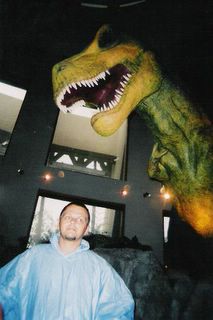Look! Up in the Sky...

Caltech Astronomer Finds Solar System's 10th Planet
from Reuters
LOS ANGELES - A California astronomer has discovered what he believes is the 10th planet in our solar system, a group of NASA-funded researchers said on Friday.
The new planet, known as 2003UB313, has been identified as the most distant object ever detected orbiting the sun, California Institute of Technology astronomer Michael Brown said.
Brown and colleagues Chad Trujillo and David Rabinowitz have submitted a name for the planet to the International Astronomical Union and are confident it will be designated a planet. Brown did not reveal the proposed name.
The procedure for approving the new planet is somewhat hazy as no new
 bodies have received that designation since Pluto was discovered in 1930, Brown said.
bodies have received that designation since Pluto was discovered in 1930, Brown said."We hope that it's fairly noncontroversial among those who believe Pluto is a planet," Brown said. "I would say get out your pens and start rewriting the textbooks today."
The planet is located about 9.7 billion miles from the sun and is about 1 1/2 times the size of Pluto, the researchers said. It orbits the sun once every 560 years and is now at its farthest point from Earth, he said. In about 280 years, the planet will be as close as Neptune, he said.
The new planet is believed to be part of the Kuiper Belt, a large ring of icy objects that orbit beyond Neptune and are believed to be remnants of the material that formed the solar system.
Their finding comes a day after a Spanish team of astronomers announced the discovery of another relatively large object orbiting in the solar system's outer reaches. That object, Brown said, was about three-quarters the size of Pluto.

Report: Saturn Moon May Have Ice Volcanoes
from The Associated Press
LOS ANGELES - Saturn's tiny moon Enceladus, long thought to be cold and still, appears to have active ice volcanoes, scientists reported Friday.
A recent flyby of the international Cassini spacecraft found evidence
 of a huge cloud of water vapor over the moon's south pole and dramatic warm zones of heat leaking out of the icy moon.
of a huge cloud of water vapor over the moon's south pole and dramatic warm zones of heat leaking out of the icy moon.If confirmed, the discovery would put Enceladus in the class of geologically active moons with Jupiter's Io and Neptune's Triton.
The July 14 flyby, in which Cassini flew within 110 miles of Enceladus, confirmed that the moon possessed a significant atmosphere, possibly created by volcanism, geysers or gases escaping from the surface or the interior. The planet-sized Titan is the only other Saturn moon known to have a thick atmosphere.
Recent images snapped by the spacecraft revealed distinctive geological features on the snow-white moon. Its south pole was covered with house-sized ice boulders and showed no evidence of impact craters - an indication that the terrain is much younger than the rest of the moon's surface.
Scientists expected Enceladus' southern region to be cold and lacking in activity because of the little sunlight it receives. But to their surprise, they spotted warm spots in its icy surface that most likely came from heat from evaporating ice. Scientists have not ruled out the possibility that the moon may have special sunlight-trapping techniques that may help explain the south pole's warmness.

Ice Lake Found on Mars
from Space.com
The European Space Agency’s (ESA) Mars Express has snapped an image of a modest ice lake on the Red Planet.
The frozen patch of water ice is tucked away in an unnamed impact crater. The feature is located
 on Vastitas Borealis, a broad plain that covers much of the far northern latitudes.
on Vastitas Borealis, a broad plain that covers much of the far northern latitudes.The ice patch is present all year round, as the temperature and pressure are not high enough to allow the frozen water to escape into the atmosphere.
Faint traces of water ice are also visible along the rim of the crater and on the crater walls, ESA officials said. The absence of ice along the north-west rim and walls may occur because this area receives more sunlight due to the Sun’s orientation.
The poles on Mars are known to contain large quantities of water ice. There is also ample water ice beneath the surface of Mars. But it is not so common to see isolated patches of water ice away from the poles.
 Earlier this year, ESA scientists said subsurface ice they detected on Mars could provide habitats for life. But so far, there is no convincing evidence for martian biology.
Earlier this year, ESA scientists said subsurface ice they detected on Mars could provide habitats for life. But so far, there is no convincing evidence for martian biology.










 The two light sabers from the original Star Wars and its 1980 sequel Star Wars: The Empire Strikes Back are among more than 75 "artifacts" in an auction that also includes Harrison Ford's signature leather jacket from Indiana Jones and the Last Crusade, estimated to fetch some $50,000.
The two light sabers from the original Star Wars and its 1980 sequel Star Wars: The Empire Strikes Back are among more than 75 "artifacts" in an auction that also includes Harrison Ford's signature leather jacket from Indiana Jones and the Last Crusade, estimated to fetch some $50,000.
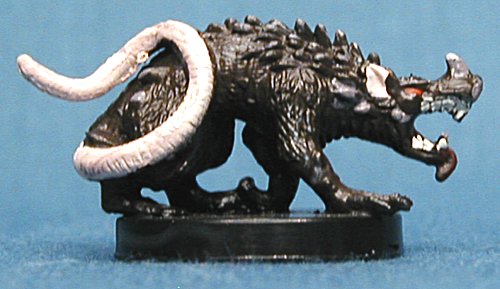
 The house mice - believed to have made their way to Gough decades ago on sealing and whaling ships - have evolved to about three times their normal size.
The house mice - believed to have made their way to Gough decades ago on sealing and whaling ships - have evolved to about three times their normal size.
 ape-like creature said to haunt the wilderness of western Canada, has entered the world of modern DNA testing.
ape-like creature said to haunt the wilderness of western Canada, has entered the world of modern DNA testing.

 woman in the Sicilian city of Palermo after convincing her they were vampires who would impregnate her with the son of the Anti-Christ if she did not pay them.
woman in the Sicilian city of Palermo after convincing her they were vampires who would impregnate her with the son of the Anti-Christ if she did not pay them.
 sending pig semen into space, the BBC reports.
sending pig semen into space, the BBC reports.

 Barrymore is apparently anxious to resume her role as Gertie, but only if Spielberg, who directed the first film, agrees to oversee the project. According to reports, the sequel will see ET return to a now grown-up Gertie, desperate for help saving his family from extinction.
Barrymore is apparently anxious to resume her role as Gertie, but only if Spielberg, who directed the first film, agrees to oversee the project. According to reports, the sequel will see ET return to a now grown-up Gertie, desperate for help saving his family from extinction. Now, finally, things are looking rather smurfin'.
Now, finally, things are looking rather smurfin'.
 Doohan died at 5:30 a.m. at his Redmond, Wash., home with his wife of 28 years, Wende, at his side. The cause of death was pneumonia and Alzheimer's disease.
Doohan died at 5:30 a.m. at his Redmond, Wash., home with his wife of 28 years, Wende, at his side. The cause of death was pneumonia and Alzheimer's disease.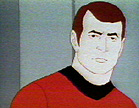 At 19, James escaped the turmoil at home by joining the Canadian army, becoming a lieutenant in artillery. He was among the Canadian forces that landed on Juno Beach on D-Day. "The sea was rough," he recalled. "We were more afraid of drowning than the Germans."
At 19, James escaped the turmoil at home by joining the Canadian army, becoming a lieutenant in artillery. He was among the Canadian forces that landed on Juno Beach on D-Day. "The sea was rough," he recalled. "We were more afraid of drowning than the Germans." Mandela is to become a comic strip hero in a new project aimed at encouraging young people to read, his charity foundation said.
Mandela is to become a comic strip hero in a new project aimed at encouraging young people to read, his charity foundation said.
 last year of the movie Napoleon Dynamite, about a quirky, dancing teen and his sleepy Idaho town.
last year of the movie Napoleon Dynamite, about a quirky, dancing teen and his sleepy Idaho town. comic-book loving nerd played by actor Adam Brody. Bands such as Weezer also feed off the dork image, complete with horn-rimmed glasses and a song about being OK with not fitting the Beverly Hills mold. Napoleon Dynamite has a fan club; its Web site claims 150,000 members.
comic-book loving nerd played by actor Adam Brody. Bands such as Weezer also feed off the dork image, complete with horn-rimmed glasses and a song about being OK with not fitting the Beverly Hills mold. Napoleon Dynamite has a fan club; its Web site claims 150,000 members. people from high school are asking me if I have a job for them. So I guess it wasn't so bad to be a dork."
people from high school are asking me if I have a job for them. So I guess it wasn't so bad to be a dork." sticker on his motorcycle that says "Talk Nerdy To Me" so he attracts the kind of women he's looking for — "a librarian type girl," who likes to go to bookstores and art galleries and whose eyes don't glaze over when he starts talking about the finer points of Babylon 5 or Battlestar Galactica.
sticker on his motorcycle that says "Talk Nerdy To Me" so he attracts the kind of women he's looking for — "a librarian type girl," who likes to go to bookstores and art galleries and whose eyes don't glaze over when he starts talking about the finer points of Babylon 5 or Battlestar Galactica. passion for something that may not be popular at the moment, like maybe computers, Star Wars, physics," says Mai, a 28-year-old university employee who lives in Walnut, Calif. "Say, for instance, we're watching a dream movie with Tom Cruise, Denzel Washington, Brad Pitt and Topher Grace. I'd gush over Topher Grace," she adds, referring to an actor from That '70s Show who's known for his geek appeal.
passion for something that may not be popular at the moment, like maybe computers, Star Wars, physics," says Mai, a 28-year-old university employee who lives in Walnut, Calif. "Say, for instance, we're watching a dream movie with Tom Cruise, Denzel Washington, Brad Pitt and Topher Grace. I'd gush over Topher Grace," she adds, referring to an actor from That '70s Show who's known for his geek appeal.

 The planet, a gas giant slightly larger than Jupiter, orbits the main star of a triple-star system known as HD 188753 in the constellation Cygnus ("The Swan").
The planet, a gas giant slightly larger than Jupiter, orbits the main star of a triple-star system known as HD 188753 in the constellation Cygnus ("The Swan").

 year has already seen Fantastic Four, Batman Begins, Sin City, Constantine, and Elektra. And waiting in the wings are dozens of superheroes, each poised to either make movie history (X-Men) or get ridiculed into oblivion (Daredevil).
year has already seen Fantastic Four, Batman Begins, Sin City, Constantine, and Elektra. And waiting in the wings are dozens of superheroes, each poised to either make movie history (X-Men) or get ridiculed into oblivion (Daredevil). as a possessed motorcycle rider hellbent on justice.
as a possessed motorcycle rider hellbent on justice. by a suit of armor, to be directed by Nick Cassavetes), Doctor Strange (a sorcerer of the mystic arts), Nick Fury (a James Bond-like spy), and Black Panther (the first black comic book character, although he was beaten to the big screen by Spawn).
by a suit of armor, to be directed by Nick Cassavetes), Doctor Strange (a sorcerer of the mystic arts), Nick Fury (a James Bond-like spy), and Black Panther (the first black comic book character, although he was beaten to the big screen by Spawn). still several years off. Joss Whedon, the brains behind Buffy the Vampire Slayer, will direct — though the super-heroine may need some updating.
still several years off. Joss Whedon, the brains behind Buffy the Vampire Slayer, will direct — though the super-heroine may need some updating. created in the `80s by Alan Moore, one of the most respected writers in comics. Moore's previous forays to the big screen haven't gone well, with duds like League of Extraordinary Gentlemen and Constantine. He has already been very critical of the Wachowski brothers' script, calling it "imbecilic."
created in the `80s by Alan Moore, one of the most respected writers in comics. Moore's previous forays to the big screen haven't gone well, with duds like League of Extraordinary Gentlemen and Constantine. He has already been very critical of the Wachowski brothers' script, calling it "imbecilic." Another classic, the Flash, is also in the incubator. After penning the screenplays for Batman Begins and Ghost Rider, David S. Goyer has been tapped to direct the speedster.
Another classic, the Flash, is also in the incubator. After penning the screenplays for Batman Begins and Ghost Rider, David S. Goyer has been tapped to direct the speedster.
 metallic head Wednesday in football and other competitions with a goal of triumphing against human soccer champions - after 50 years or so of practice.
metallic head Wednesday in football and other competitions with a goal of triumphing against human soccer champions - after 50 years or so of practice. explored a new kind of firepower that is instantaneous, precise and virtually inexhaustible: beams of electromagnetic energy. "Directed-energy" pulses can be throttled up or down depending on the situation, much like the phasers on Star Trek could be set to kill or merely stun.
explored a new kind of firepower that is instantaneous, precise and virtually inexhaustible: beams of electromagnetic energy. "Directed-energy" pulses can be throttled up or down depending on the situation, much like the phasers on Star Trek could be set to kill or merely stun.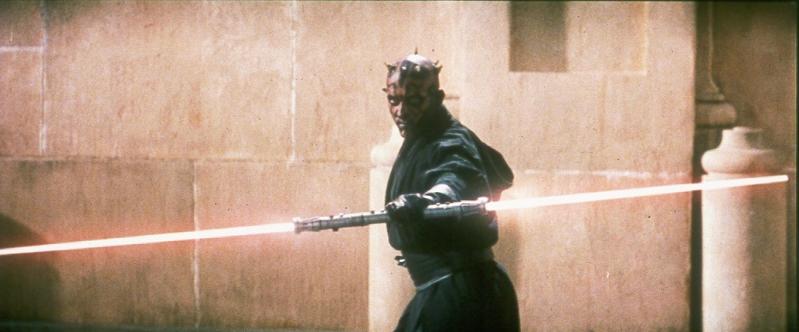

 what the Great Conjunction is. 'What's the Great Conjunction?'
what the Great Conjunction is. 'What's the Great Conjunction?' 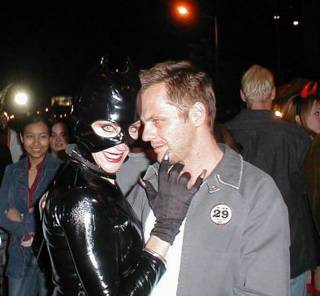





 A Is for Androids
A Is for Androids B Is for Boba
B Is for Boba C Is for Calvin
C Is for Calvin D Is for Dragons
D Is for Dragons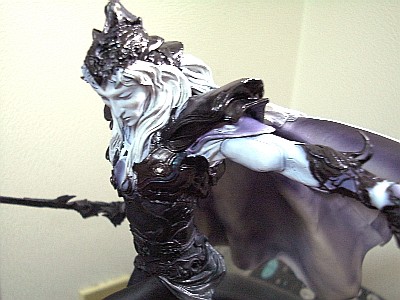 E Is for Elric
E Is for Elric F Is for Futures
F Is for Futures G Is for Genie
G Is for Genie H Is for Hobbits
H Is for Hobbits I Is for Iceman
I Is for Iceman J Is for Jedi
J Is for Jedi K Is for Kraken
K Is for Kraken

































































